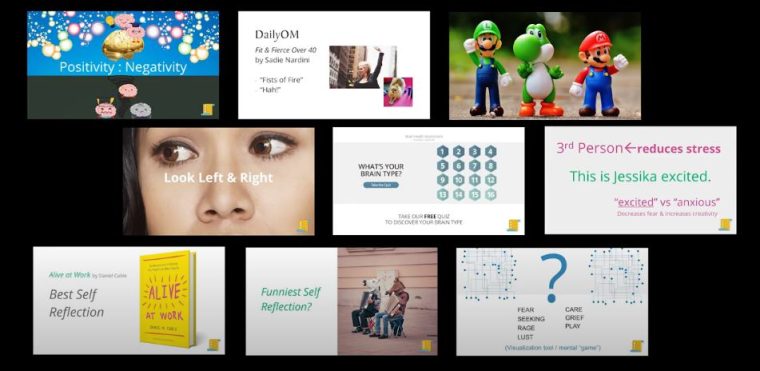Here’s an excerpt from Escaping Ever-Stressed Mode, highlighting some of my favorite science-backed tips that really helped me (circa 2019).
What Will You Try?
If you have to pick just one tip to try out first, which one would be your favorite? (Note that I recommend that you watch the above video first, otherwise I am afraid this list won’t seem all that enticing. The video has mic, and rotten tomatoes, and bubbles, the Mario Brothers, and other fun stuff! So go watch that now… I’ll wait…)
- I focused on my positivity to negativity ratio. This is backed by the science of Positive Psychology. Check out Dr. Barbara Frederickson’s book Positivity for more.
- The Stress-Busting sequence in the Daily Om course entitled Fit & Fierce Over 40 really did, indeed bust stress. I believe this is because of the way “preparatory sets” work. When faced with a stimuli, we orient to it, and behind the scenes a coordinated response from many systems “prepares” for action. If we don’t act (e.g. punch an aggressive co-worker in the face) the preparatory set may linger… in part, this might be a tense muscle (perhaps in, say, your shoulders). Yelling “HAH!” while doing yoga just very well might help us release that tension (complete the action our body was preparing for, but never got to execute).
- Looking left and right while thinking about what is bothering you. This is based on research that Dr. Amen often quotes. It believe it is similar to the way EMDR works (bilaterally).
- Knowing your brain type. The free quiz What’s Your Brain Type? will give you tips for YOUR brain type. They work!
- “This is Jessika excited.” This combined research from two studies (sorry I do not have the links but should not be too hard to find).
- The Best Self Reflection (Google and you’ll find one easily) and my spin off The Funniest Self Reflection. The first would activate the SEEKING system. The second… well, I suppose it *may* activate your play system, but it would also count as a form of positivity. Check out How Humor Can Save the World.
- Paying attention to “bottom-up emotions.”
